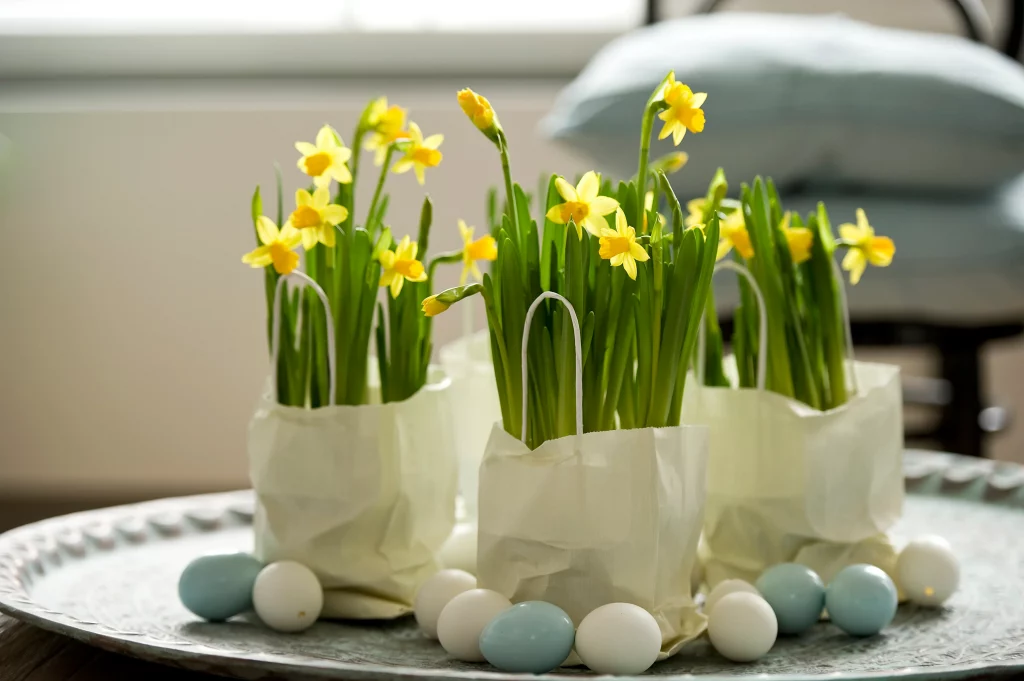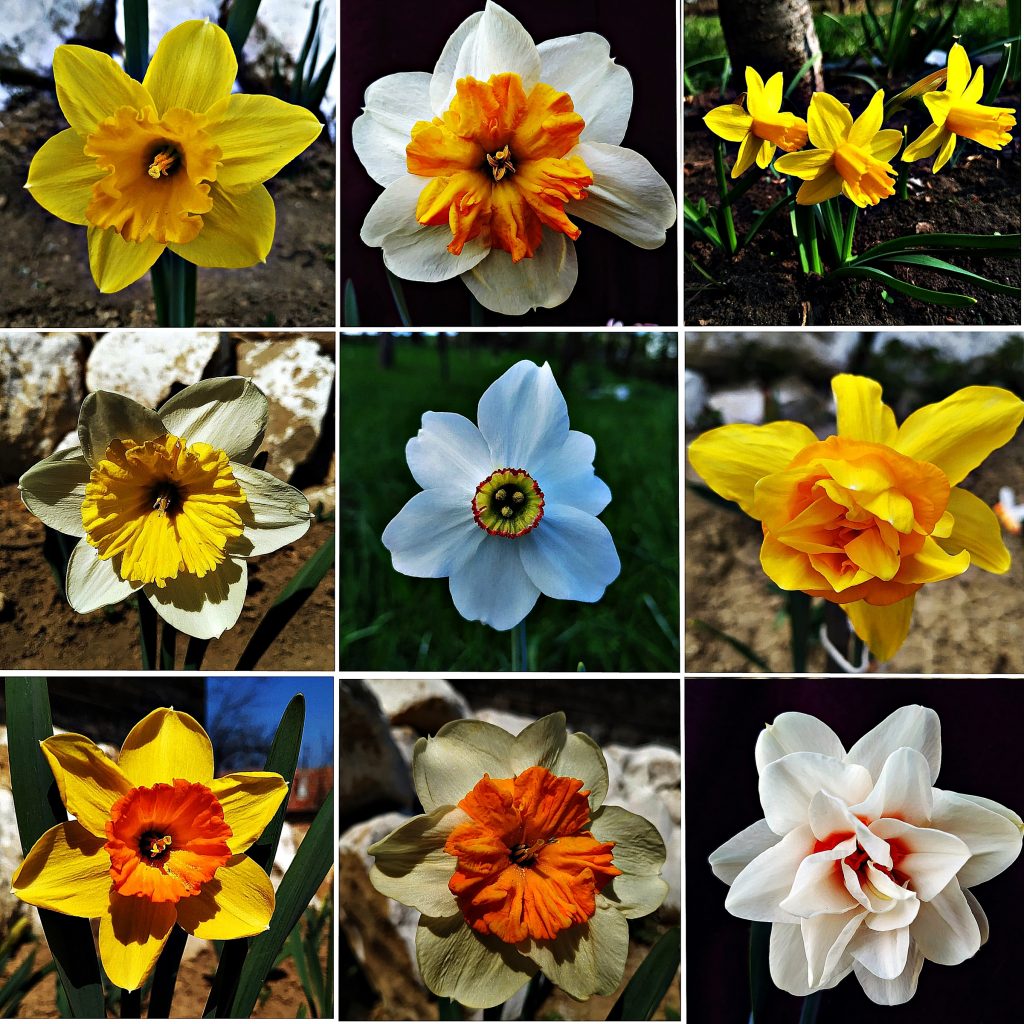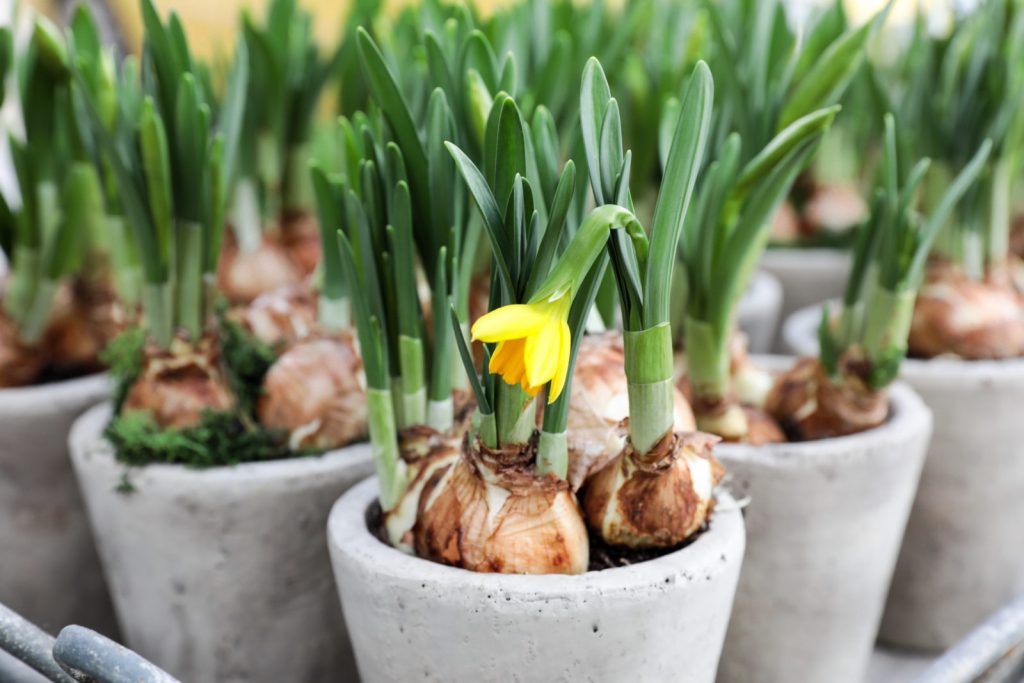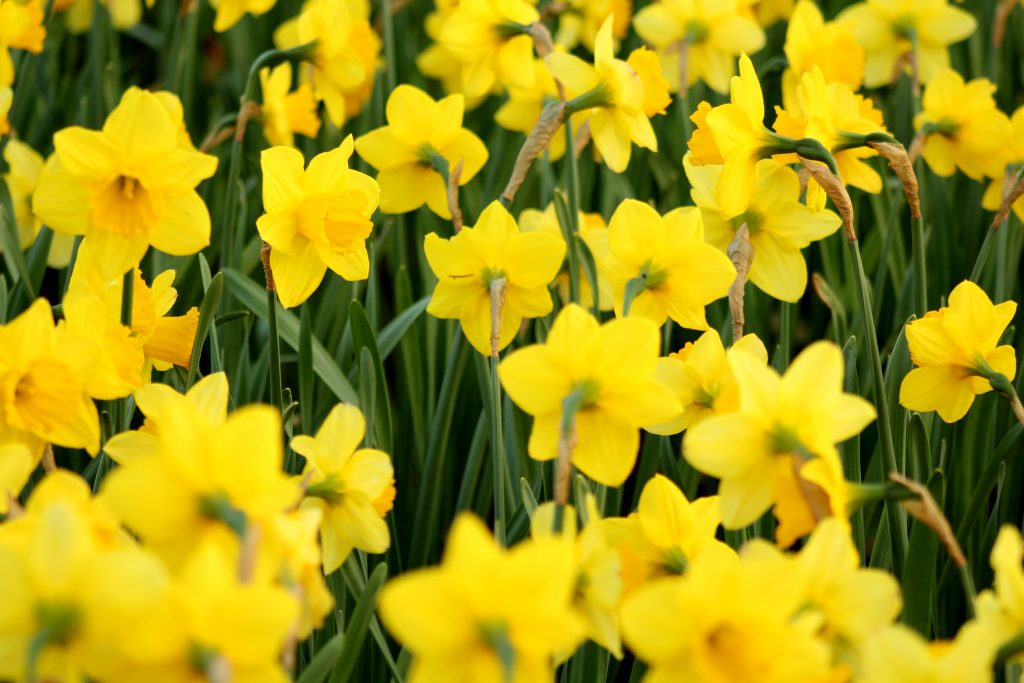Table of Contents
Daffodils have some charisma to hold anyone’s attention. This can be because of its magnificent bright flowers and ability to cheer anyone. Therefore, daffodils are one of the most popular and easy-growing perennial bulbs. They are also an indication of spring when the flowers bloom. These plants can survive in the chilly winters as well as warmer temperatures as their flowers emerge in spring. In areas with warmer climates, daffodils are purchased as prechilled bulbs and planted as regulars.
Moreover, growing daffodils in pots is not a very hard task. If you have short space, it would be best for you to grow these plants as they do not have many expectations from you. However, there are different types of daffodils, and most of the varieties have yellow blossoms. But there are some varieties with colours of flowers in orange, pink, and bicolour cultivars. Do not think much about it.
Read to find the tips and tricks for growing daffodils in pots to decorate your space.
How To Grow Daffodils In Pots
Daffodils are also spring-growing perennial plants and are easy to care for, just like other perennial plants. However, you need to prepare things beforehand while you are growing them in pots or containers. We have mentioned some details below. Make sure to read them properly before planting one.
1. Choosing The Right Bulb
This is a prime step because if you do not choose a healthy bulb to plant, then you won’t have a plant that is suitable for producing flowers. Thus, select a daffodil bulb with no black spots on it and have a large, firm shape. Also, the bulb should have a dry papery covering. However, discard bulbs that have withered, are overly dry or soft, or are mushy in texture. If they seem overly soft, that implies that rot is most likely set in. While growing in pots, you should plant daffodils in groups of three or at least a dozen bulbs of one variety for them to grow well.
2. When to Plant
Daffodils are perennial plants and can thrive in chilly weather conditions. However, it takes time to develop its roots significantly when growing in pots. Thus, it is necessary to plant it in mid to late autumn in the warmer months. This is because it will help to have blossoms in the upcoming spring. However, if you receive winter later in your area, you can plant these plants after Thanksgiving.
3. Where & How to Plant
While growing in pots, you need to choose a proper container for daffodils to develop their roots. However, it becomes necessary to place them in the proper place where they can receive sunlight.
It is quite easy to plant the daffodil bulbs. Plant the bulbs from the inflated side down and pointed side up, which is about 3 to 6 inches deep, using light soil. However, place the bulb about 8 inches deep. Also, keep in mind to place the bulbs about 5 inches apart for an immediate and denser impact. In cases when daffodils are growing in pots, then you should put one or two bulbs in a pot so that they don’t have to struggle for water and nutrients.
How to Care For Daffodils

Daffodils are great plants for growing in pots. However, they require care and nourishment in order to have beautiful flowering. Also, they indeed require less maintenance and water compared to other active growing season plants. We have mentioned some major requirements of these spring-growing perennial plants. They are as follows:
1. Light
Daffodils are perennial plants, as mentioned above, so they need full sun at least six hours a day to thrive. Moreover, they cannot withstand partial shade. Sometimes they are planted with deciduous trees. In that case, these spring bloomers often bloom when the trees are leafed out. Also, make sure to place the pots to keep in a space that receives plenty of sunlight while growing in pots.
2. Soil
Daffodils prefer neutral to slightly acidic soil. The pH of the soil can be around 6.0 to 7.0. The best growth of the plant is observed in rich, moist soil, but also the soil should have excellent drainage quality to protect the roots from rotting.
3. Watering
Watering should be done regularly when growing in pots during spring. However, stop watering in mid to late spring for three to four weeks after the flower fades. This is because they become dormant during the summer and prefer drier soil at this time.
4. Fertilising
Daffodils do not require external help in many cases. But if you have poor soil or the plants are not flowering as much as they should. You can lightly feed the plants with bulb food first when the leaves emerge and secondly when there is bloom.
5. Pruning
Daffodils bloom once a season, so as the blooms fade, the top portion of each flower stem can be removed. Otherwise, it will prevent seed formation. However, leave the foliage in place until it begins to yellow. This is because leaves absorb sunlight that helps feed the bulb for the upcoming year’s blossom.
6. Mulching
These plants do not need to be protected from the chilly weather. However, some reasons have very cold weather but no snowfall. In such situations, it is necessary to add a layer of mulch to the daffodils growing in pots, as this will help the bulbs to retain moisture and regulate soil temperature.
Types of Daffodils

Daffodils are also known as Narcissus, and there are around 40 species available. Also, over 32,000 registered daffodils cultivars to grow. However, gardeners and breeders have categorized daffodils into 13 different divisions with unique differences. Precisely the main difference is based on the form of the flowers that they have. We have mentioned below the different divisions to give you a better understanding.
Division 1: Large-cupped – As the name suggests, this variety of daffodils has large cups for about or more than one-third the length of the petals. However, they have one bloom per stem and also have a range of colours, from white to yellow to orange.
Division 2: Trumpet – This variety of daffodils has a large trumpet-shaped central corona and is surrounded mainly by six petals. They are suited for growing in pots and are some of the earliest to bloom.
Division 3: Small-cupped – This variety has a central cup that is less than one-third the length of the petals. It also has a colour range similar to the large-cupped daffodils.
Division 4: Double – According to its name, this variety of daffodils has clustered cups and petals, with more than one bloom per stem.
Division 5: Triandrus – The flowering in this division of daffodils has a hanging bell. Usually, these hanging bells boast two or more blooms per stem, making it seem more like a cluster.
Division 6: Cylamineus – This variety of daffodils has swept-back petals. Also, it has one to five blooms per stem.
Division 7: Jonquilla – This variety of daffodils has flat petals but has a sweet fragrance. They also feature narrow cylindrical leaves and typically have one to five blooms per stem.
Division 8: Tazetta – This variety of daffodils has clusters of florets along with a sweet fragrance. Also, you can notice anywhere between three to 20 blooms per stem. The leaves of tazetta daffodils are broader than usual. They are often yellow or white in colour.
Division 9: Poeticus – As the name suggests, this variety of daffodils has a very poetic appearance. They have pure white petals surrounding a flattened crinkled cup. Also, they have a sweet smell with a cup in green centre circled in yellow and rimmed with red. However, they have one bloom per stem.
Division 10: Bulbocodium – This variety of daffodils features small petals and a “hoop petticoat” shaped cup along with petals surrounding it.
Division 11: Split-cupped – The cup has distinct features of this variety of daffodils as it is spilt open mostly at least halfway.
Division 12: Miscellaneous – These are mostly hybrids that are formed by inter-division. Therefore, they do not fall under any category and have different features.
Division 13: The Wild Ones – This variety holds species and wild variants along with wild hybrids.
In these different divisions, there are various cultivars as well, which are described as ‘miniature.’ This is because they have smaller blooms and are usually less than 2 inches in diameter. However, all the divisions are accessible for growing in pots only if you care for them properly.
Pests and Diseases Affecting Daffodils Plants

Daffodils are well-known for their immunity to pests and diseases. But sometimes, there are certain conditions when the following problems may occur to your potted daffodils. While growing in pots, the soil should be well-drained, and if it is not, then there are chances of witnessing such problems. We have mentioned some common pests and diseases.
1. Narcissus Flies
They lay eggs at the base of the plants. Thus, when the eggs hatch, the larvae tear down the bulbs. Therefore, sometimes you can notice worms inside during routine bulb division. There is only one solution when these flies act on your daffodils growing in pots. You have to throw away the affected bulbs.
2. Bulb Mites
These are the main cause of the weakening of daffodils. The plants growing in pots and are kept indoors face this issue. However, various spray pesticides can cure this issue.
3. Nematodes
These are lumpy lesions on the foliage. Unfortunately, there is no cure for this issue. These microscopic soil worms are so hazardous that you need to give up growing daffodils in soils where they are present.
Summing It Up
These are some common pests and diseases that are caused to daffodils growing in pots. There is one more issue. Narcissus yellow stripe virus, which causes brown and yellow lines on the foliage. The only cure for it is that you have to remove the affected plant. Else we have mentioned detailed information about growing daffodils in pots.
However, there are different methods of growing daffodils, such as growing them from seeds or repotting them. But that can be tricky and require some expert supervision. Thus, we advise you to buy the bulb from the nearest nursery for better and easier produce for your space. Do not prune leaves as it is necessary, and do not over-water them as well.
Keep above mentioned tips and tricks in mind, and you will have a pot of happiness for your space.





